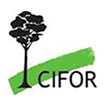
Nearly 20 years ago, in 1996, the Namibian government granted rights to wildlife—elephants, black rhino, lion and many species of antelope—to newly formed community conservancies. Now, Namibia has 82 of these community conservancies, covering 20 percent of its territory. These community conservancies have generated work for several thousand local residents and revenue from tourist lodges that goes to building schools and clinics. The environment is faring better too, as people have given up their livestock in favor of wildlife that are better suited to Namibia’s semi-arid environment.
Something similar happened in Guatemala in 1990, when the government created the Mayan Biosphere Reserve, and set aside about 40 percent of the reserve as community forestry concessions. The concessions have generated considerable income, primarily through the sales of sustainable high-value mahogany and teak. Rates of deforestation in these concessions have declined considerably.
These are two examples of initiatives that sought to build new commons institutions and enterprises—in short, they sought to connect locally produced goods and services to high-value markets.
And in both cases, local residents have reaped significant social, economic and environmental benefits.
This next generation of challenges is, quite clearly, no less daunting than that of earlier eras.
COLONIAL LEGACY
These cases exemplify the gains that some communities relying on communal forests and other natural resources in the developing world have made over the past 20 years in regaining a greater share of the use, management and other rights to those forests—areas that, during and after the colonial era, were held and administered by government agencies, often to the detriment of these communities.
Developing country governments tended to retain the colonial model of state ownership even after their countries gained independence. Where state regulation of timber extraction and development were weak, local people bore the environmental and social costs of land and watershed degradation. But they had little or no power to protect their local land and forests from encroachment by outsiders. Local rules for assigning resource rights lost force, and local institutional capacity for governing resource use often withered.
State regulation of forest use could also be aggressive and punitive. Local people could often use resources only if they managed to gain permission or paid fees. In some places, traditional uses of forests, such as subsistence hunting and collection of non-timber forest products, were criminalized. In several Sahelian West African countries, farmers had to secure permits to cut down trees they had planted on their own farms. The result: fewer trees planted.
In general, then, the progress made over the past 20 years shows how tenure security and clarification of rights can create conditions for better management of resources, for attracting outside investment, and for the more equitable sharing of commons benefits.
NEXT GENERATION
Yet we have now moved into what might be called the “next generation” of challenges in the management of common property resources: Communities have newly strengthened resource rights—but then what?
Because despite the gains, local resource governance arrangements tend to be fragile, and local enterprises tend to be weak. What’s more, progress in the devolution of rights has drawn attention to the persistent poverty in many communities reliant such commonly used resources as pastures, fisheries and water, wildlife and forests.
So at the top of the list of next-generation challenges is this: How to ensure that communities with newly strengthened resource rights can build strong local economies based on the sustainable use of local natural resources.
For a start, this will require new forms of local governance arrangements and local enterprises that are capable not only of bringing high-value local goods and services to markets, but of doing so in ways that provide fair benefits to local right holders. Intermediaries—sometimes NGOs—can be key to building local business acumen and brokering deals with outside enterprises and investors—which can also build trust among parties not accustomed to working together.
We have now moved into what might be called the “next generation” of challenges in the management of common property resources: Communities have newly strengthened resource rights—but then what?
Also important is an understanding of how people’s ability to participate in commons enterprises can vary according to their age, education, gender, health and other social and demographic factors. An appreciation of these differences, and how they manifest in power dynamics, can help build safeguards against elite capture of commons enterprises and fashion benefit-sharing arrangements that ensure all right holders get a fair share of the benefits of commons ownership.
This next generation of challenges is, quite clearly, no less daunting than that of earlier eras.
Exploring solutions is part of the aim of the panel discussion on “Commons Tenure for a Common Future,” at the 2015 Global Landscapes Forum on Saturday 5 December. By identifying these issues and delving deeply into them, we can help common tenure lead to common benefits.
We want you to share Forests News content, which is licensed under Creative Commons Attribution-NonCommercial-ShareAlike 4.0 International (CC BY-NC-SA 4.0). This means you are free to redistribute our material for non-commercial purposes. All we ask is that you give Forests News appropriate credit and link to the original Forests News content, indicate if changes were made, and distribute your contributions under the same Creative Commons license. You must notify Forests News if you repost, reprint or reuse our materials by contacting forestsnews@cifor-icraf.org.













